Victron Connect, why Bluetooth configuration can make so much sense
There are many reasons to like Victron solar panel charge controllers, but today I’ll laud the Bluetooth feature that comes with the relatively new SmartSolar models and could make sense in many electronic boat modules and sensors, I think.
First, let’s note that the SmartSolar 100/30 above costs about $226 online while the BlueSolar 100/30 goes for about $196, and the only significant difference is the Bluetooth. So Victron is apparently able to add the wireless radio and the Victron Connect app integration for small money (and is rapidly adding “Smart” to many of its formerly plain Blue components). Now let’s look at how well it works and what it can do for you, which may be different than you presume.
Frankly I remain a bit leery about Bluetooth, but it certainly has improved over the years and can be a delight when it just works. Like when I just connected the SmartSolar 100/30 to an old car battery in my shop, opened the Victron Connect app, saw the charger listed, and connected in seconds. I never had to mess with the Bluetooth settings in my (Google Pixel 2) Android phone, and the same was true with iOS on my iPad.
Moreover, I haven’t had any connection issues with either phone or tablet since. But then again, this is not like streaming audio or a masthead anemometer constantly running for long periods of time (and possibly for long, cluttered distances around your boat). Victron Connect seems to disconnect as soon as you’re done actively using it, and that’s fine with me because it’s primary use is configuration.
- Victron Connect SmartSolar Status on Android phone
- Victron Connect SmartSolar History on iPad
Checking out and configuring a new gadget in my warm shop before installing it on the cold boat was great — especially since only 12v and a phone was needed — and the Smart feature is potentially useful for all sorts of installers and troubleshooters. In fact, I used it to test two small solar panels I had kicking around, and that explains the Victron Connect Status and History screens above.
The nearly antique 7 Watt Flexcell panel putting out a measly 0.1A at 17V above hardly dented the SmartSolar’s ability to convert up to 100 volts of photovoltaic (PV) power into as much as 30 amps of 12v charging, and hence it has yet to register even a rounded-up kilowatt hour over three (semi-gray late winter) days. But this was the first time I’d ever really seen what it can do, and now I know that its little (easily replaced) controller is why Gadget’s automatic bilge pump system was failing last fall.
When the SmartSolar 100/30 replaces the still-working-fine BlueSky 2512i MPPT charge controller on Gizmo, it will be neat to finally see this sort of detail about the panel performance, especially the kWh counts. But this is where boaters can get confused, I fear. Does it really make sense to regularly monitor key boat systems by flipping through apps on your phone… even as useful, inexpensive and pretty as the screens may be?
But you don’t have to use Victron Connect that way. Perhaps the main reason I’m switching to the Victron solar controller is so I can cable its VE Direct port into the Venus hub, VRM remote monitoring, and “coming soon” MFD and N2K integration I recently discussed. I’ll hopefully have highly sophisticated power system monitoring on all sorts of interfaces, including my phone, and Victron clearly has an ambitious road map for their Venus networks.
- SmartSolar battery config in Victron Connect
- SmartSolar operation modes with user def inset
- SmartSolar Settings with VE Smart inset
Gizmo’s growing Venus-based system can handle many configuration tasks, even remotely, but Victron Connect will likely remain the easiest and most thorough SmartSolar configuration tool for quite some time. Actually I’m already experiencing this with the BMV-712 Smart that’s integrated with the Venus, and it makes sense. With Victron Connect and built-in Bluetooth, even standalone installs can include easy, yet deep configuration and also painless firmware updates (as I’ve seen with both BMV and SmartSolar), and thus VC can be the primary config tool across all the boat types and other markets Victron serves.
The left screen above shows how I’ve customized the charge settings for what Gizmo’s Firefly bank likes best, which was not possible with the Blue Sky (though its default settings were thankfully close). I won’t belabor all the possible settings and frankly don’t understand them all, but I have learned how the online manuals, Victron blog, and Victron Community can all yield information. And it is impressive when you realize that it’s often the Managing Director Matthijs Vader who is fielding user questions, and doing it well.
But I will point out the “Streetlight” section of the SmartSolar Settings menu (above right) as a sign of broad reach for both Victron and solar these days, and will note VE. Smart Networking as an alternate and possibly confusing use of the Bluetooth feature. Gizmo doesn’t need it because the SmartSolar mounted near the battery bank will temperature compensate charging with an internal sensor (or the Venus temp sensors could be involved), but the BMV could be delivering bank temperature over Bluetooth.
Confused yet? Sorry, but that’s the nature of the new beast. We’re already seeing whole boat electronics integration using all sorts of data protocols to get the job done, so why not individual sensors, chargers, etc.? NMEA 2000 has proven itself excellent for real-time critical boat data networking, with Ethernet for the big loads, but configuration is pretty much limited to same brand products (or a family of brands like the way Mastervolt power components can work with C-Zone and other Power Products members).
Meanwhile companies like Maretron, Actisense, and Yacht Devices have built good N2K configuration tools for components without displays, but they usually require a special bridge module and/or a PC. Built-in Bluetooth with an app looks to me like a great solution. I know that Victron is making the case well, and I’m glad to see it in interesting new products like the Blue Guard BG-1 bilge pump switch. Do you agree with “more please”?
PS 3/11: Here is the PDF of Gary Warner’s excellent battery charging notes as discussed below in comments (yes, the discussion has gone off topic but it’s valuable).


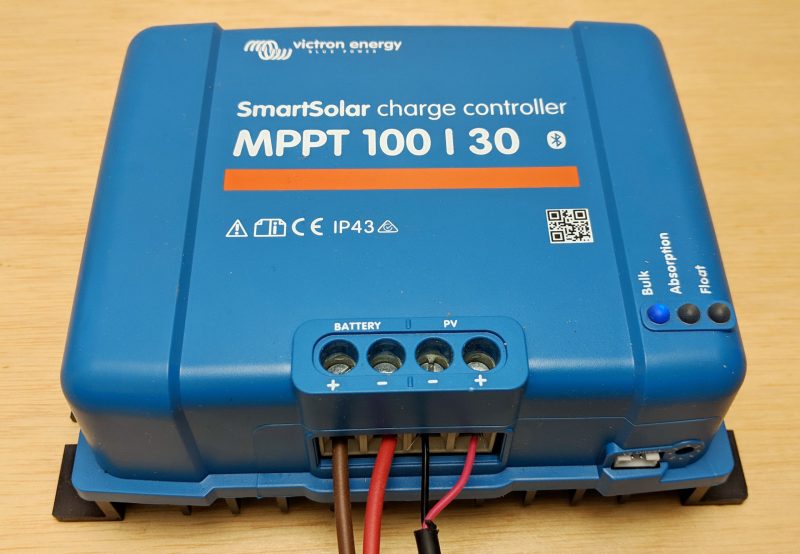

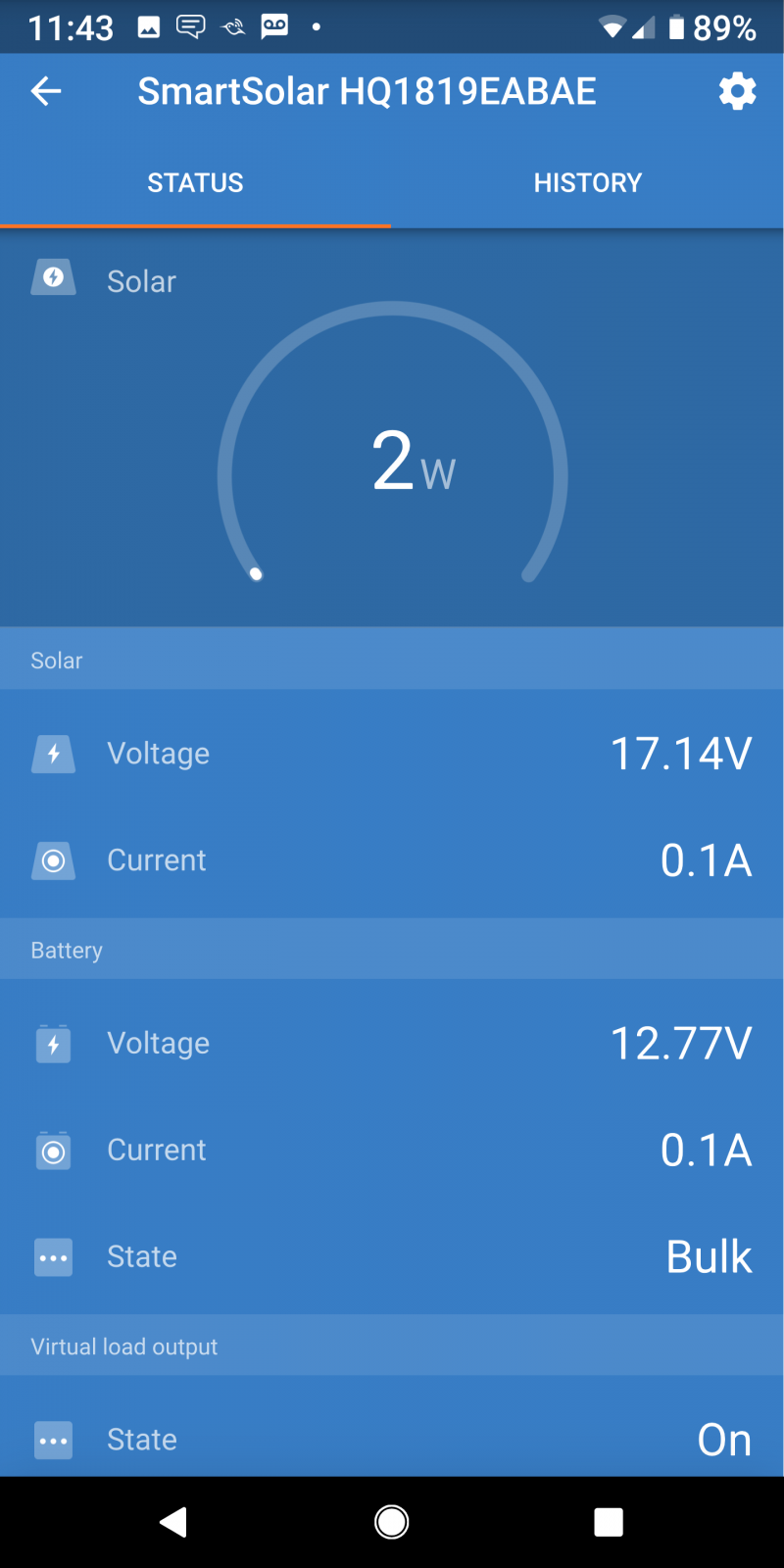
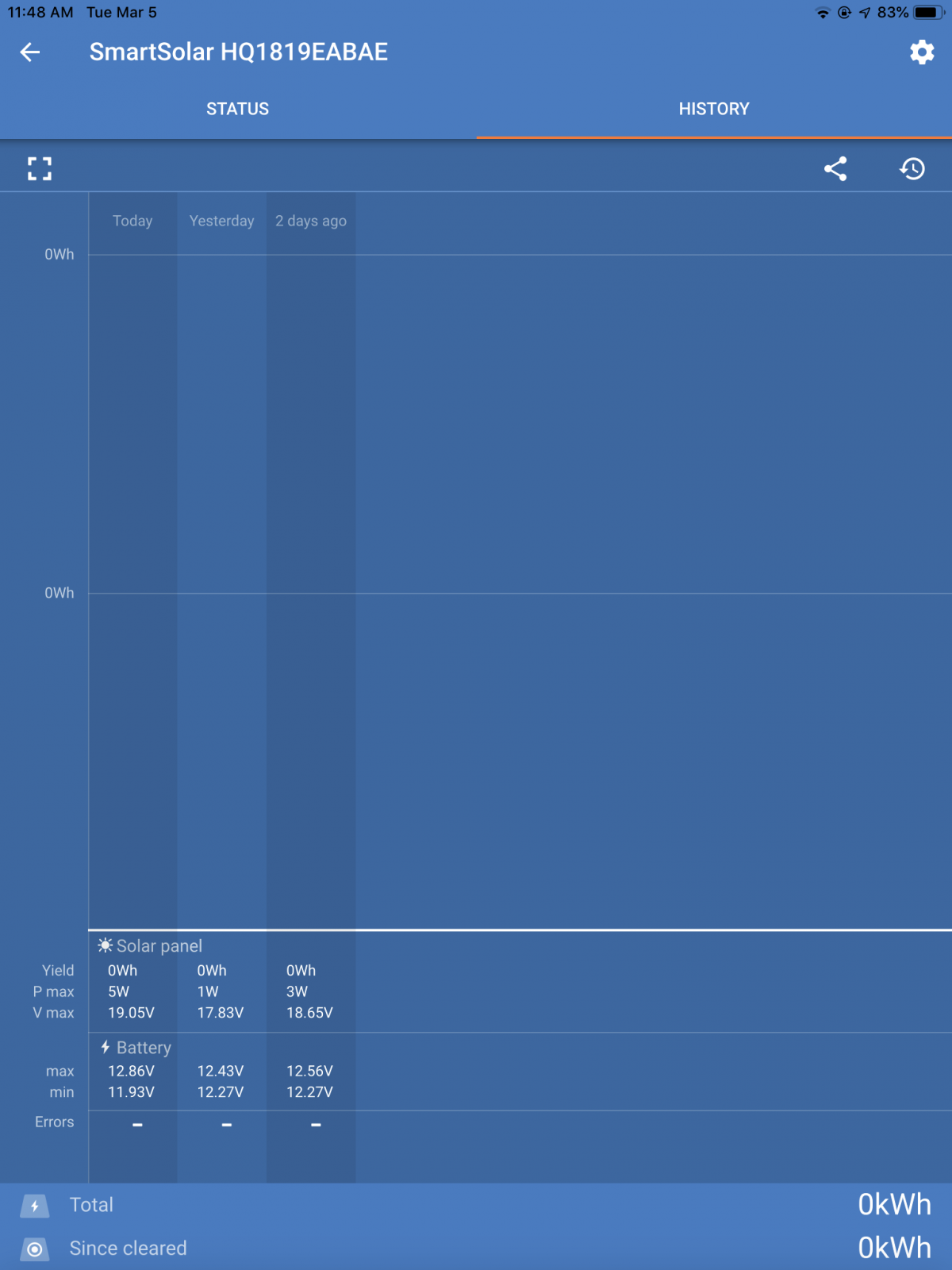
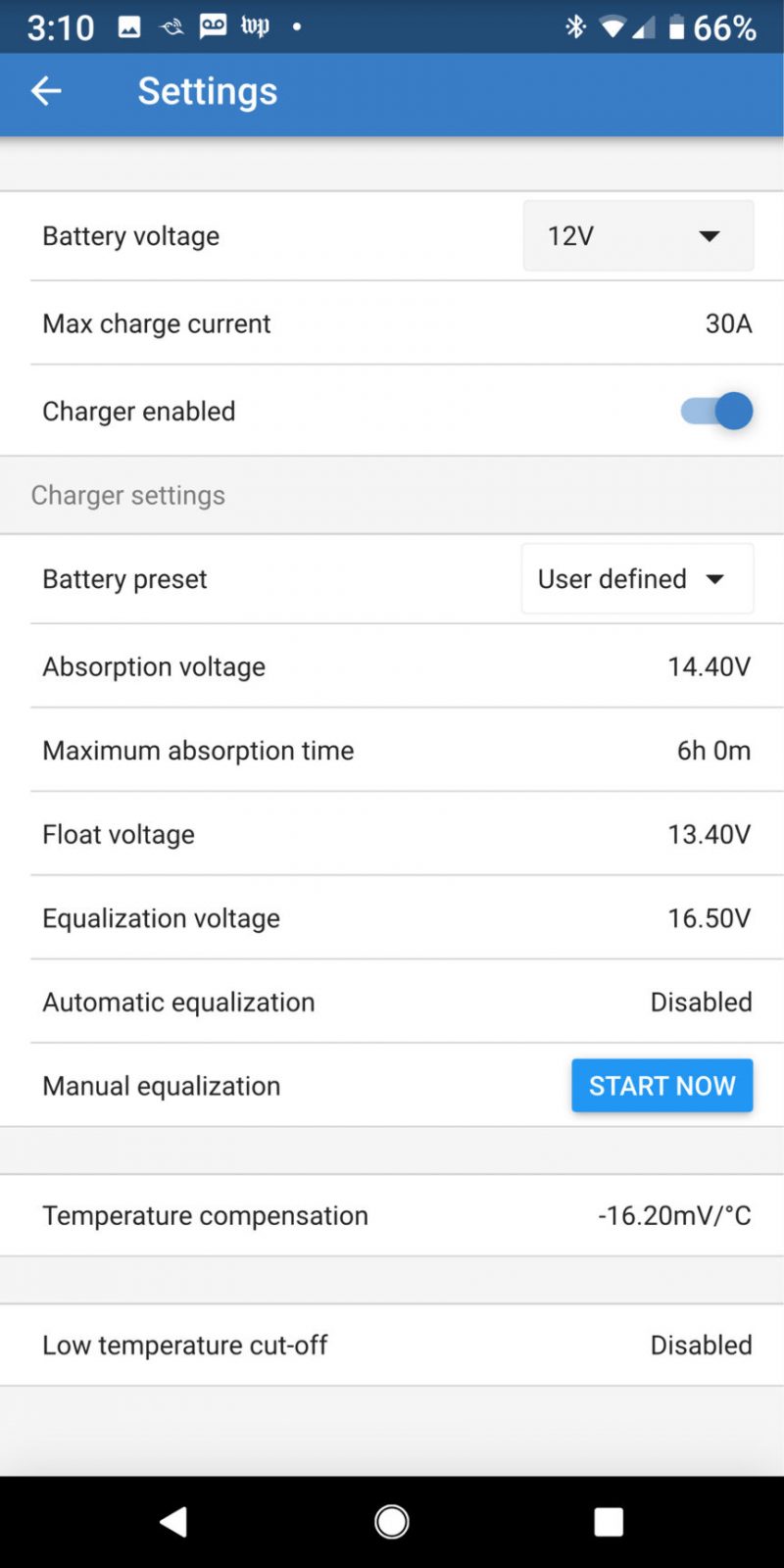
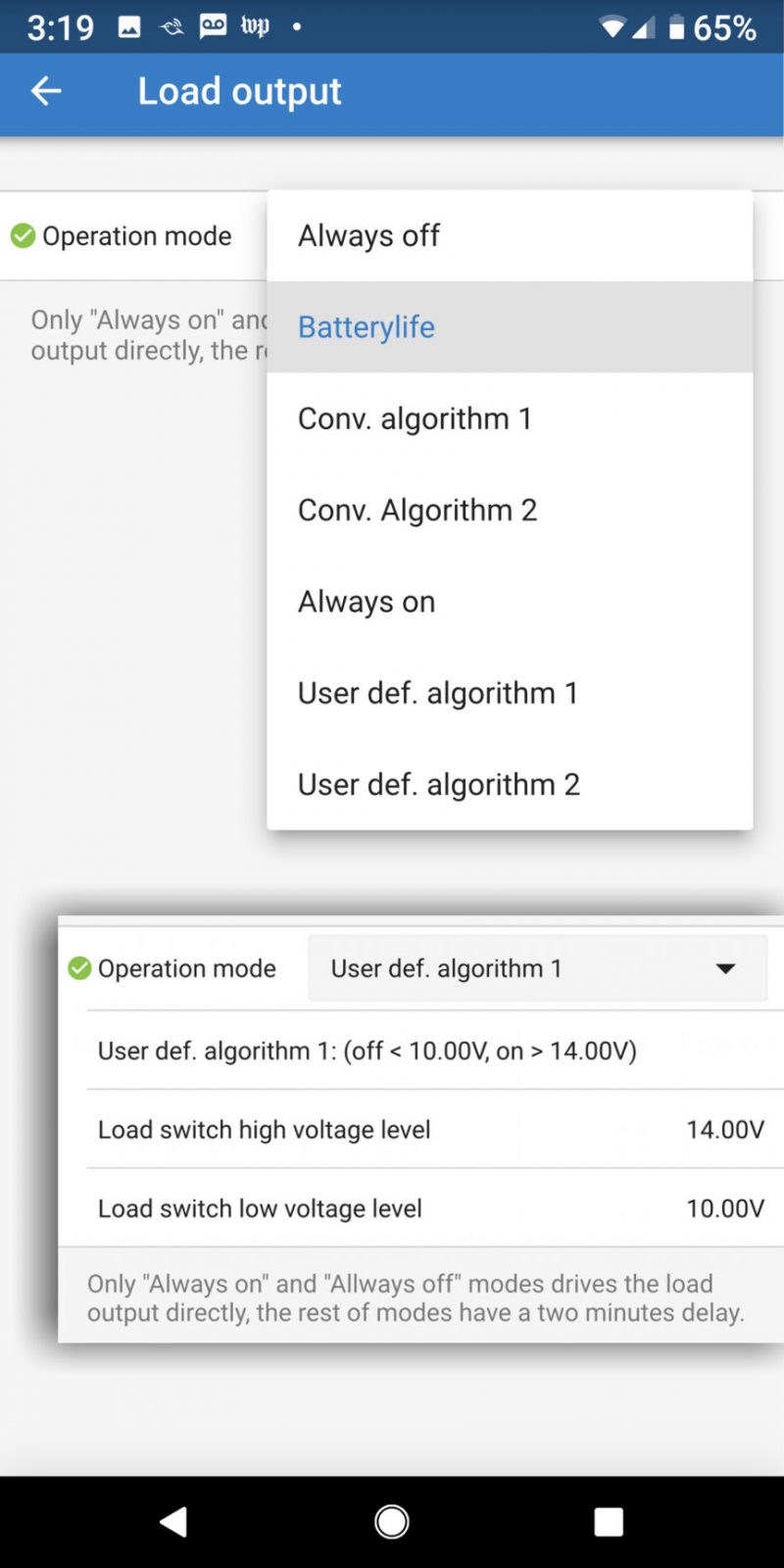
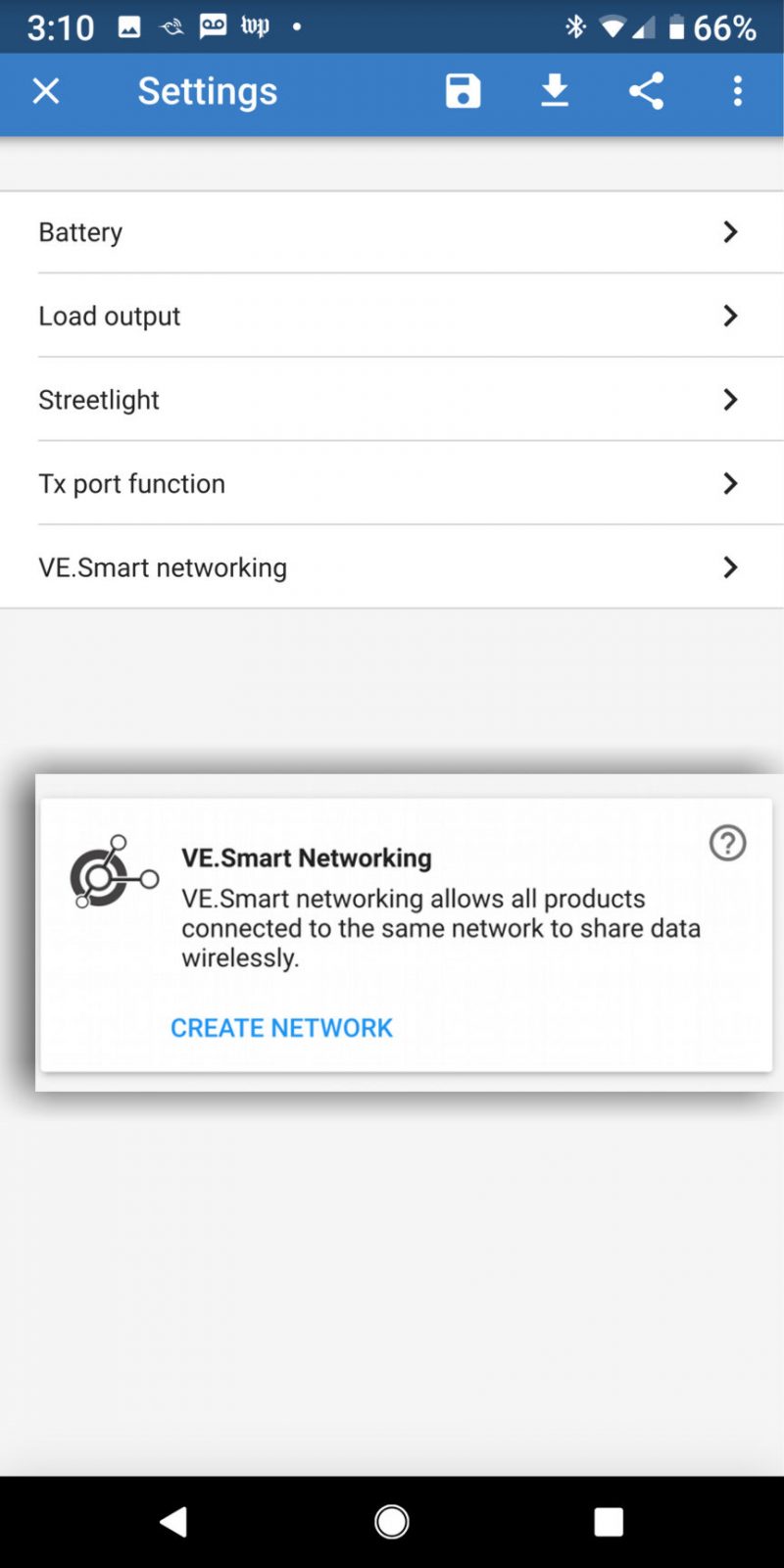











Wow, I’d love to read that again in English!!!!
Yes still eagerly waiting for Bluetooth App for my beta Balmar SG200.
I run the same solar controllers for our Firefly bank. The bluetooth option is wonderful.
Question: 16.5V equalization voltage for Fireflys? I see it is disabled, but I set EQ at the float voltage to prevent an accidental battery killing glitch.
Thanks, RickG; your suggested change already made with Victron Connect 😉 But I might change it again to 0v as I notice that Victron uses that value for battery presets setup of their Lithium models, which also shouldn’t be equalized.
I also thought about modifying the temperature compensation value to the 24mV/C° suggested in the Firefly manual, but am a little confused about it. I think it gets entered as a negative like the -16mV/C that Victron has as default in all their presets. Also think it’s a pretty minor change, especially as my Multi does not offer adjustment. Any thoughts?
Have you looked at the A&T instrument displays (aandtinstruments.com – on offshoot of Tinley)? They’re a bit niche in that they are pitched primarily as replacements for B&G Fastnet FFDs, but they have a multi protocol interface capable of N2K, Fastnet or Ethernet on the same copper (as I understand it) all configurable from your phone by bluetooth. Another interesting use of it as a config mechanism.
I think setting the EQ to 0V works just fine for Firefly batteries.
Living on the dock I worried about the batteries being on float 24 hours a day. On the hook/mooring that is not a problem.
During the last three winters when Gizmo has had shore power available, I’ve been fairly careful about Float too. But now that I have the Venus system with much easier configuration access to my MultiPlus 12/2000 inverter/charger, I realized it has a Storage mode:
“The Storage mode kicks in whenever the battery has not been subjected to discharge during 24 hours. In the Storage mode float voltage is reduced to 2,2V/cell (13,2V for 12V battery) to minimise gassing and corrosion of the
positive plates. Once a week the voltage is raised back to the absorption level to ‘equalize’ the battery. This feature prevents stratification of the electrolyte and sulphation, a major cause of early battery failure.”
You can see Storage in action at Gizmo’s VRM site right now:
https://vrm.victronenergy.com/installation/30059/share/d9560ba7
I don’t fiddle with temperature compensation on the solar controllers. I do have temperature sensors and the BMV 712 sensor is in the warmest space.
On another battery topic – can you make available your Balmar 614 alternator regulator settings for charging your Firefly batteries, as many of your readers with similar setups are intetested. My request some time ago for these custom settings seems to have been lost in the ether.
Also, I have an older Victron 100/50 solar charger without the built-in Bluetooth. The accessory Bluetooth dongle works as described above and is much easier to use than the remote display accessory device for settings and firmware updates.
Hi, Gary. The “ether” you reference is my deep uncertainty about publishing settings I don’t fully understand and are to some extent specific to Gizmo’s alternator setup and the heavy loads typical when underway. HOWEVER, today I brought home all the notes accumulated as two boat power professionals helped “perfect” the settings and I promise something soon on Firefly thread. It will be qualified “use at your own risk” but maybe too will prompt expert discussion.
Hi Ben – I’d be happy to send along my settings for my Balmar 614, Victron 100/50, and battery charger, if that would be helpful.
Thanks, Gary. I would like to see your settings, either by email (ben.ellison at panbo.com) or just post them here. Note that RickG just posted Bruce Schwab Energy Systems recommendations for Balmar 614 Firefly setup (that I was not aware of), and I posted Gizmo’s more aggressive settings below.
I use the alternator settings for the Group 31 Firefly settings recommended by Bruce Schwab. He has a PDF he sends on request that he also posted on
File: http://www.cruisersforum.com/forums/attachment.php?attachmentid=169059&d=1525226268
Thread: http://www.cruisersforum.com/forums/f14/how-to-properly-program-balmar-614-and-high-output-alt-162539.html
Cheers, RickG
Hey, Rick, these are very useful links. I was hoping Bruce would do something like this PDF but the recommendations aren’t posted on his Firefly page. Thanks!
But I’m not surprised that my 614 settings are more aggressive. They were worked out by my friend Alden Cole while we were moving Gizmo south in 2017 — and with direct Balmar consultation — and they reflect the fact that my Firefly bank is almost invariably at partial SoC when the engine is started and immediately gets constant loads of 20 plus amps when I turn all the nav electronics on:
Gizmo’s Balmar 614 uses the default settings for AGM (AgL) batteries with these exceptions:
bv — Bulk voltage — 14.6 v
b1c — Bulk time — 1 hour
Av — Absorption voltage — 14.4v
A1c — Absorption time — 3 hours
Fv — Float voltage — 13.6v
FbA — Field threshold, Bulk to Absorption — 50%
bEL — Belt Load Manager — b-2 (field reduction 14%)
I’ve used these settings ever since and am not aware of doing any damage, but maybe I should check around again. Also, this season I will be able to see exactly what the settings do via Venus and VRM.
Interesting. Did you up the bulk and float voltage due to measured voltage drop? Our batteries are very close to the alternator and we have 2/0 cables, so the voltage drop is very small.
Cheers, RickG
I think that the alternator to Firefly bank run is about 8 feet and all the primary DC cables that came with Gizmo tend to oversize.
I also have notes from late 2016 when I didn’t think that the 614 was doing its best for the Fireflies and Rod Collins advised me on about settings. They’re pretty close to what Alden and I later worked out:
bv — Bulk voltage — 14.5 v
b1c — Bulk time — 6 min
Av — Absorption voltage — 14.4v
A1c — Absorption time — 2+ hours
Fv — Float voltage — 13.6v
I don’t know how much Rod’s recommendations were specific to my situation or if they’ve have changed (and I’d like to), but Alden got the impression from Balmar that the 614 likes a minimum of 0.2v difference between Bulk and Absorb.
I spoke with Alden today and he thinks I should goose bEL up to b-1 (and he had already studied my particular pulley and belt situation pretty closely).
Hi Ben & RickG – Thanks for providing your settings for your Balmar MC-614 alternator regulators. I have attached my battery charging information package as the settings stand today.
To put our use into context – our boat is an Ellis36 with a single 440Hp Yanmar diesel. Our house bank consists of 4-Firefly G31 batteries. Engine charging is by a Paul Grosser 180A alternator with remotely located diodes and Balmar MC-614 regulator. Solar charging is by 2x144W and 1x100W Solbian panels in parallel with a Victron 100/50 controller. Dockside charging is with a 2003 vintage Xantrex Freedom 30 charger. We have a Lifeline starting battery charged by a Sterling DC-DC charger off the house bank. No generator.
I have modified the Balmar and Victron charging settings over time, but feel that I’m not getting the full benefit of the high capacity alternator with the 18 minute bulk time (blc) setting. I have discussed my settings with Balmar and they are reluctant to agree with a longer bulk time setting, probably for fear of overcharging. I am considering raising the bulk time setting to 30 minutes or 1 hour this season. My plan is to more closely monitor the alternator output vs time to get a better handle on bulk charging when running only the frig and when running both frig and freezer. I have tried to extend the transition from bulk to absorption by lowering the field threshold – bulk to absorption (FbA) without extending the bulk time. BTW, Balmar also informed me that the difference between the bulk and absorption voltages could be reduced to a minimum of 0.1 Volt even though they normally recommend 0.2 Volts in their literature.
I was curious to find out other folks settings for comparison and I thank you both for proving that information. I was not aware that Bruce Schwab had provided a comprehensive recommendation for the MC-614 for the Firefly batteries. That information was not available in 2016 when I was trying to determine my initial settings. It is helpful to see his take on this issue. Ben, I can see why you have longer bulk and absorption time settings as your running load is probably at least 2 times the loads we might experience underway. Your non-running and overnight loads are likely higher as well. We also may have more solar capacity which certainly helps get back to 100% SOC on a regular basis.
Also of interest is the information on the first page of the attachment dealing with the percent of charge that the Victron and Xantrex chargers consider a fully charged battery bank. The high Victron solar charger charging cutout level is excellent, but the lower cutout for the Xantrex charger is disappointing. I have reviewed a number of other manufacturers battery chargers and find that most cutout well below the desired 100% SOC, leaving me wondering if dockside charging without some solar capacity to top off the batteries results in diminished service life. Those boaters considering new battery chargers should check the device operating characteristics to be sure they are getting equipment that will properly charge their batteries.
Our boat normally resides on a mooring and when cruising we anchor out or rent a mooring. We rarely dock overnight. Our largest normal loads are a 3.6 cubic foot refrigerator and 50 quart ARB freezer, both operated at 12 Volts. Overnight the house battery SOC drops to about 88-92% with only the frig running and 78-82% with both frig and freezer running.
Thanks, Gary! I just made your PDF available in a PS to the entry above.
I’m impressed with how well you’ve documented your battery and charger system, and think it could be helpful even to boaters with different equipment. It also highlights the many — and very possibly confusing — configurations possible with a Balmar 614 regulator.
I guess Ben Stein is impressed too, because I know he’s working on making attachments possible in comments.
I finally got the Victron SmartSolar installed on Gizmo and of course the Bluetooth Victron Connect app was an excellent tool for instantly checking how well it was working. To my pleasant surprise, the app can now also see the Venus and thus give me another way to use the Remote Console.
Also great is what happened at my VRM site as soon as I ran the VE Direct cable from the SmartSolar to the Venus. Check it out on the public portion of my remote monitoring:
https://vrm.victronenergy.com/installation/30059/dashboard
There may not be much sun in Maine today — or the rest of this week ;-( — but I can see exactly how well it’s keeping up with Gizmo’s loads.
Very cool, especially for pro installers: The Victron Connect app can now be run remotely if the Victron device is networked with a GX / VRM system:
https://www.victronenergy.com/…/victronconnect-v5-20-conne…/